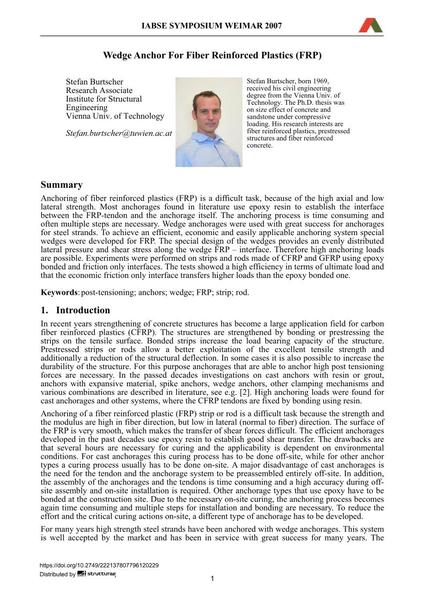Wedge Anchor For Fiber Reinforced Plastics (FRP)

|
|
|||||||||||
Détails bibliographiques
| Auteur(s): |
Stefan Burtscher
|
||||
|---|---|---|---|---|---|
| Médium: | papier de conférence | ||||
| Langue(s): | anglais | ||||
| Conférence: | IABSE Symposium: Improving Infrastructure Worldwide, Weimar, Germany, 19-21 September 2007 | ||||
| Publié dans: | IABSE Symposium Weimar 2007 | ||||
|
|||||
| Page(s): | 192-193 | ||||
| Nombre total de pages (du PDF): | 7 | ||||
| Année: | 2007 | ||||
| DOI: | 10.2749/222137807796120229 | ||||
| Abstrait: |
Anchoring of fiber reinforced plastics (FRP) is a difficult task, because of the high axial and low lateral strength. Most anchorages found in literature use epoxy resin to establish the interface between the FRP-tendon and the anchorage itself. The anchoring process is time consuming and often multiple steps are necessary. Wedge anchorages were used with great success for anchorages for steel strands. To achieve an efficient, economic and easily applicable anchoring system special wedges were developed for FRP. The special design of the wedges provides an evenly distributed lateral pressure and shear stress along the wedge FRP – interface. Therefore high anchoring loads are possible. Experiments were performed on strips and rods made of CFRP and GFRP using epoxy bonded and friction only interfaces. The tests showed a high efficiency in terms of ultimate load and that the economic friction only interface transfers higher loads than the epoxy bonded one. |
||||
| Mots-clé: |
mouillages
|
||||
